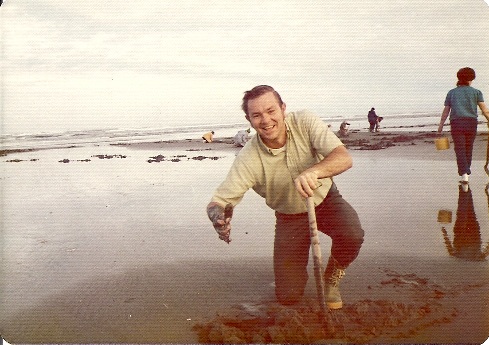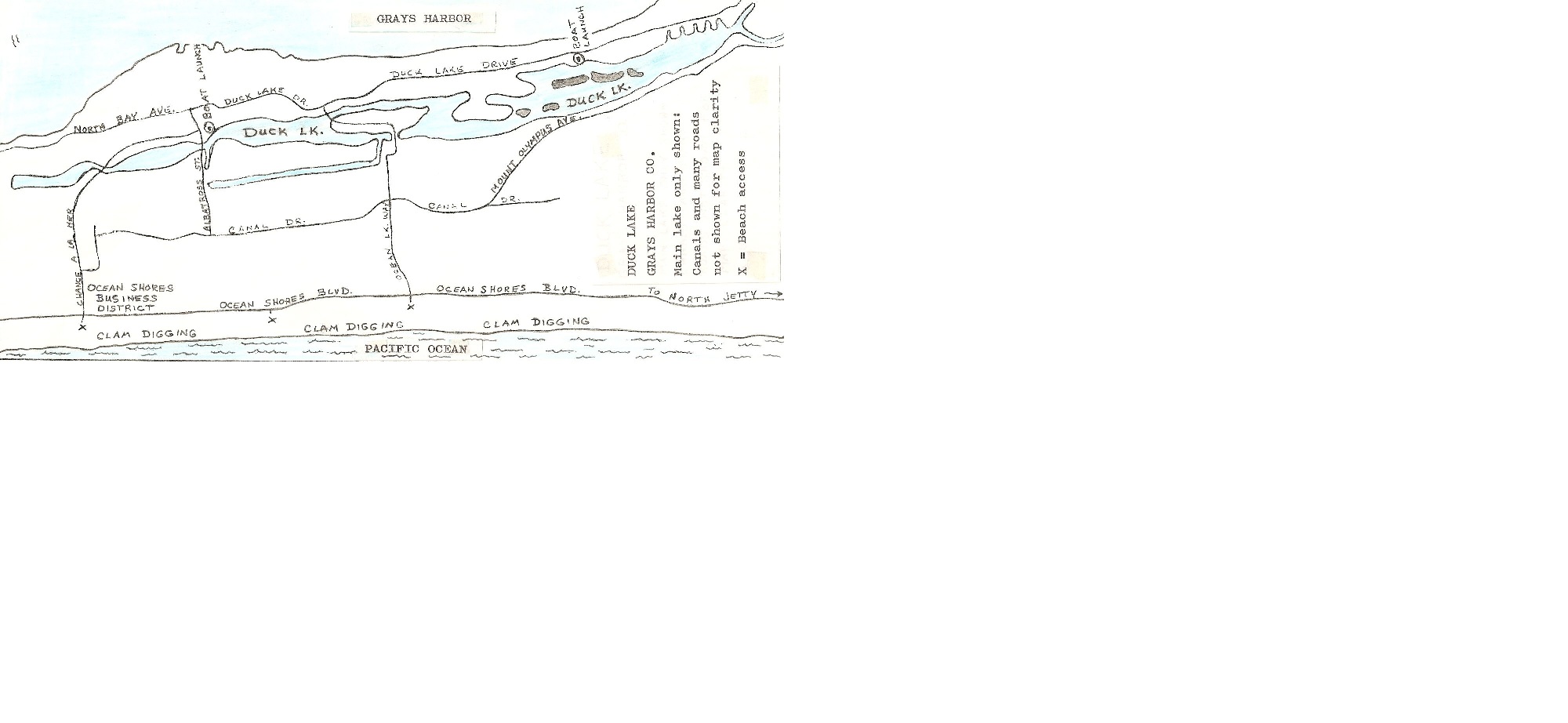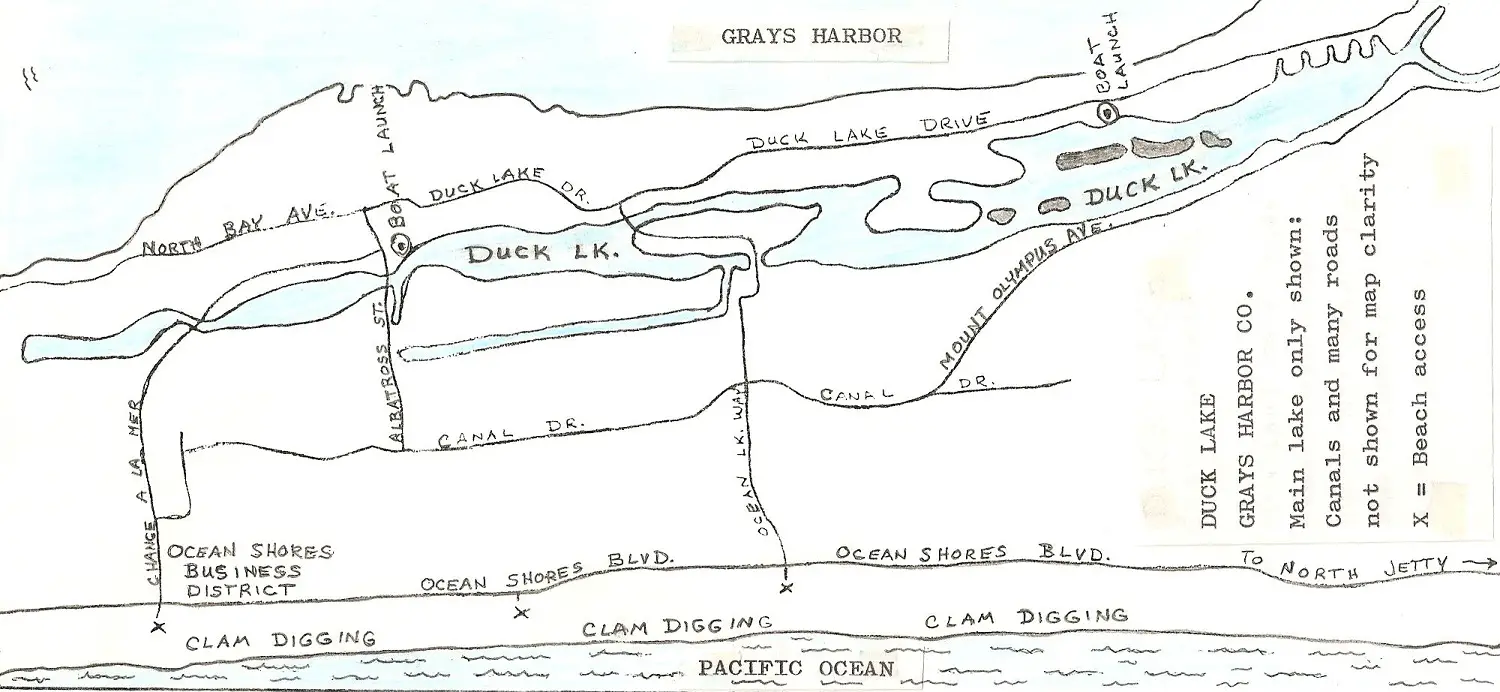Search
Latest Articles
Bass and Bivalves - Duck Lake
by Bob Johansen, April 02, 2012
March and April, in Washington, is a great time of the year for razor clams, largemouth bass and early spring camping -- especially if you are camping in a motor home, trailer or a nice warm camper. The Ocean Shores area, located on the Washington coast offers these outdoor opportunities and more.
Although other camping facilities are available, I usually like to camp at the Ocean City State Park. It is located about two miles north of the city (community) of Ocean Shores and is within easy walking distance of the ocean beach and good razor clam digging. It is also close to Duck Lake, which is spread all through the community of Ocean Shores and offers good fishing opportunities for largemouth bass, rainbow trout, cutthroat trout, black crappie and bluegill.
Razor clam digging tops the list of outdoor activities when the season is open. (usually late March and April -- check current regulations). During this period, when the tides are low, the park buzzes with activity and sometimes every campsite in the park is occupied. Remember, a shellfish license is required to dig razor clams. It must be displayed on the out side of your clothing and if it blows off in the wind and is lost, you must purchase another license before digging again. This happened to me one time.
There are miles of good claming beaches to provide plenty of room for the almost unbelievably large number of enthusiastic clam seekers. And -- most of the experienced diggers walk off the beach with limits, which for many years has been the first 15 clams you dig.
One of the biggest problems for beginning diggers is locating a "show." The "show" is how the razor clam, unwittingly tells the digger where to dig. The typical show is a small hole in the sand. (The larger the hole, the larger the clam -- usually) Other less obvious shows may be only a small dimple in the sand -- or, for surf diggers, the quickly disappearing neck of the clam as a wave recedes.
When the clams seem a little reluctant to expose their sandy homes, they can sometimes be encouraged to do so with the "stomping technique." This technique sort of resembles a war dance or maybe a rain dance. (The latter dance however is seldom used to produce rain at this time of year on the Washington coast.) Anyway, the diggers stomp around in a circle, and then, with their backs to the ocean, look back and observe. Often, shows will magically appear where there were none before. Another way to encourage shows to appear is to tap the sand with the shovel handle. This works quite well, but the dimples left in the sand are often mistaken for shows by beginning diggers – And, probably a few old timers as well.
There are two main digging implements that are used to remove the clam from the sand. One is the tube. It consists of a tube of aluminum, stainless steel or PCV plastic pipe about four inches in diameter and about 30 inches long with a cap and handle on the diggers end. There is an air hole about 1/4 inch diameter in the top of the tube to allow it to be fairly easily inserted into the sand. The air hole is plugged with the thumb, creating a vacuum as the tube, filled with sand and hopefully the clam, is pulled from the sand.
The other popular digging tool is the clam shovel. It has a long narrow blade with a short handle. When a show is spotted, the digger kneels down and digs just to the ocean side of the show. The depth of the clam usually depends on how close to the ocean you are digging -- the closer to the ocean, the shallower the clam.
When digging with a shovel the clam should be retrieved by hand to avoid breaking the shell. As you reach into the hole to feel for the clam, do so with some caution. Razor clams are noted for their sharp shells and digging by hand with reckless abandon can result in nasty cuts on the hand or fingers.
After you have dug a limit, wash all the sand from the clams and place them in a container of clean water. The clams will then clean even more sand from themselves. After an hour or so, remove the shells and clean the clams. It is in the cleaning process that one learns the value of digging carefully so you don't break the shell. A clam with an unbroken shell is easy to clean. One that is mangled during the digging process and has a broken shell can be cleaned, but only with considerably more effort.
Breaded and fried, Razor Clams will provide a real treat for any seafood lover!
Digging razor clams at Ocean Shores
After the clams are cleaned and placed on ice in the cooler, it's time to think about fishing. For the fishing aficionado, opportunities abound. There is surf fishing for sea perch, jetty fishing for a potpourri of ocean dwellers and fresh water fishing for rainbow trout, largemouth bass and bluegill. I usually like to spend some time on Duck Lake hunting for largemouth bass.
Duck Lake is located throughout the community of Ocean Shores. It covers 197 surface acres and has numerous small islands and canals. Because it has a maximum depth of only 10 feet, is at an elevation of only 10 feet and is near the ocean it warms up earlier in the spring than most lakes further inland. The warmer water makes it a good choice for early spring angling for jumbo rainbow trout and lunker sized bass. Bluegill and crappie provide additional angling opportunities as well as a great food source for the larger fish. There is a public access onto the lake that provides a good concrete boat launching ramp and plenty of paved parking spaces.
I first fished Duck Lake on April 19, 1988. After digging a nice limit of razor clams, I decided to launch my canoe onto Duck Lake and try for bass. After only about 25 casts, I caught a nice 2 pound, 10 ounce largemouth. On the very next cast, from under the same dock, I caught a nice 19 inch, 4 pounds even bass. Both fish hit a black jig with a blue Gator Tail worm - - And both fish were released. How can I remember that far back -- I can’t -- I referred to old fishing records.
Map of Duck Lake
Ocean City State Park is a large park with 149 standard campsites and additional 29 with full hook-ups. Reservations can be made by calling 1-800-452-5687. The phone number for the park is 360-289-3553.
For the latest information on razor clam season and fishing regulations, call the Washington Department of Fish and Wildlife at 360-902-2200 or write then at, 600 Capitol Way North, - Olympia, Wa. 98501-1091.
Note: It has been a while since I was at Ocean Shores – Some changes may have been made – check for latest State Park information & Razor Clam regulations.
By: Bob Johansen – March 2012


